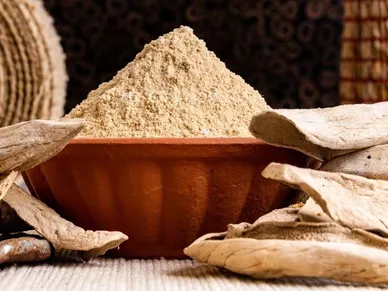Whole Spices
Spice Categories

Cloves
Cloves are inviting due to their oils rich in eugenol, giving them a strong flavour. Used worldwide, they enhance various foods. They come from places like Indonesia, Madagascar, and India, with top producers being Tanzania and Madagascar. Madagascar’s cloves are renowned for their exceptional quality, passed down through generations. Among many tastes, Malagasy cloves are remarkable, showcasing nature’s beauty and care.
Green & Black Cardamon
Green cardamom is cherished for its strong flavour and pleasant aroma, enhancing global cuisines uniquely. It adds a special flair to dishes with its special taste and fragrant quality.
Black cardamom provides a powerful, camphor-like flavour intensified by its smoky nature from drying. Unlike green cardamom, its pods bring a different taste, spicing up dishes similar to Indian cardamom but with an intriguing twist.
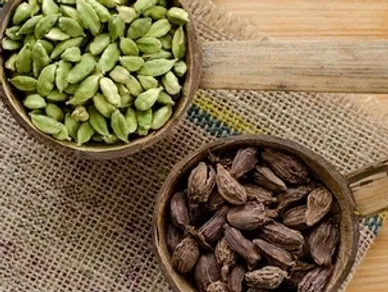
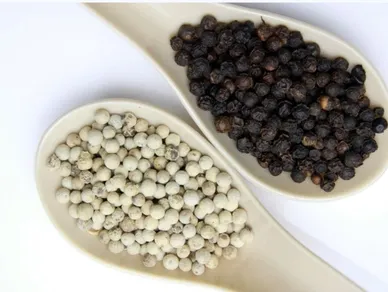
Black & White Pepper
Black pepper is the world’s most traded spice, found in various cuisines worldwide. Its sharpness, thanks to piperine, is different from the spiciness of chilli peppers. It’s a common ingredient that adds a unique spiciness to dishes enjoyed by people from different places.
White pepper comes from the same plant as black pepper but is processed differently. The story of their origin and preparation methods makes them stand out in the world of spices.
Mace & Nutmeg
Mace comes from the red covering of the nutmeg seed, offering a gentle yet complex flavour like nutmeg itself. It adds a delicate touch to baked goods, meats, fish, and pickled foods, enhancing dishes and preserving them with elegance.
Nutmeg, a popular spice made from seeds, is usually finely ground. It has a warm, slightly nutty taste that’s great in desserts, curries, and drinks like mulled wine and chai tea. Beyond its appeal, it contains powerful compounds that might protect against illnesses and support overall health.
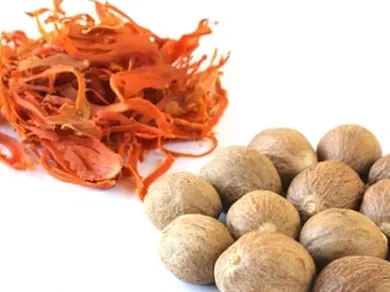
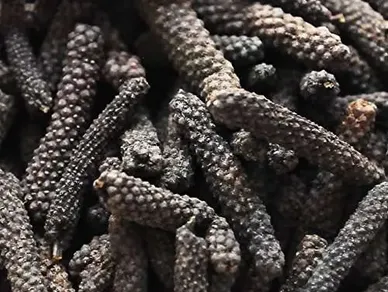
Long Pepper
Long Pepper comes from the dried fruit of the Piper longum plant. This plant has slender stems, a pleasant fragrance, and durable woody roots. It’s not only used to enhance food but also in pickles and preserves. Besides its role in cooking, its fruits and roots are used for medicinal purposes, helping with respiratory issues, soothing irritation, and reducing muscle discomfort and inflammation. With its abilities to aid digestion, boost iron levels, and fight against worms, Long Pepper grows well in limestone-rich soil with plenty of rain and humidity, showing how it thrives in its environment.
Ginger Dried (Whole/Split)
Dried ginger is a special type of ginger that goes through a detailed process to become what it is. It starts with harvesting mature ginger roots that are about 8 to 10 months old. After that, the roots are soaked overnight and carefully rubbed by hand to clean them. The outer skin is then gently removed, a step that can’t be done by machines. Once this is done, the dried ginger is sent to places where people use it, and its rich flavor is brought out by grinding it. This journey turns into a fragrant experience.
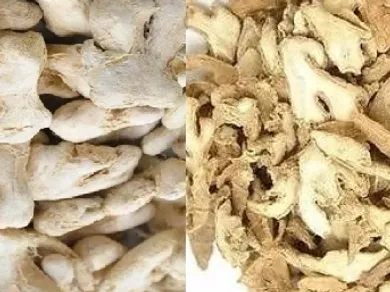
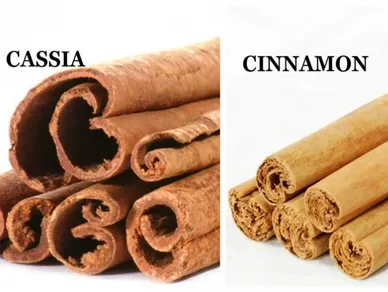
Cinnamon & Cassia
Cinnamon is a wonderful spice made from the inner bark of various Cinnamomum trees. It adds a delightful fragrance to cooking and is used in a wide range of dishes. Whether in sweet or savory foods, from breakfast to snacks and even drinks, cinnamon enhances flavors and traditions.
Cassia is another spice that’s a bit different. It’s darker in color and has thicker, tougher sticks compared to the delicate texture of cinnamon. It’s considered a lower grade than cinnamon but is more common because it’s cheaper. This affordability makes it a popular choice in many places around the world.
Cumin & Coriander Seed
Cumin is a spice that offers a warm and earthy taste, combining a mix of sweetness and bitterness. It’s really versatile and works well whole or ground. To bring out its best flavor, you toast the seeds. Cumin can enhance a wide variety of foods, from meats to vegetables, soups to sauces, adding a nice aromatic touch.
Coriander seeds bring an earthy, slightly tangy, and subtly sweet flavor. When you toast them, they release a lovely floral smell. Apart from the taste, these seeds also have health benefits like lowering bad cholesterol and increasing good cholesterol. They are a fragrant symbol of both good cooking and well-being.

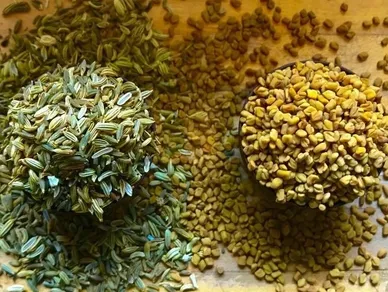
Fennel & Fenugreek Seed
Fennel is a perennial herb with delicate leaves and bright yellow flowers, belonging to the carrot family. It adds a strong aroma and flavor to cooking, much like anise. This special scent even extends beyond food and into the world of absinthe, showcasing its influence beyond the kitchen.
Fenugreek, both its seeds and leaves, are essential ingredients in Indian cooking and have been valued for a long time. They’re not just used in food but also in traditional medicine. This ancient gem brings both flavor to dishes and healing potential to various practices.
Turmeric
Turmeric is a bright, golden spice with a long history. It comes from the root of the Curcuma longa plant and adds a warm and earthy taste to dishes. It’s famous for curcumin, which is an active compound with possible anti-inflammatory and antioxidant benefits, good for health. This versatile spice is used in cooking, traditional healing, and modern health efforts due to its vibrant color and potential benefits.
Turmeric powder has a warm and slightly bitter taste, similar to black pepper, along with a mustard-like smell. Curcumin, a yellow chemical from turmeric, is approved as a food additive by organizations like the WHO, European Parliament, and USFDA.
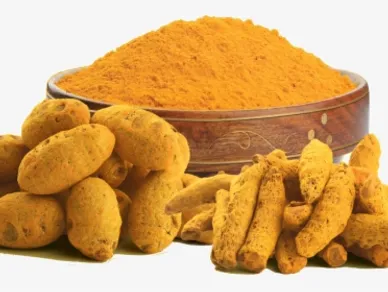

Red Chili Dried
Chili peppers are like fiery berries from nature. When they’re fresh, we use them as vegetables by chopping and eating them. Once they dry, they turn into potent chili powder, adding spiciness to our food. To make them last longer, we can dry them or preserve them in oil or brine. Have you ever tried hot sauce? It’s made from chilies! These amazing ingredients can turn plain dishes into exciting, spicy ones.
Dried Mango (Amchur)
Dry Mango Powder, or Amchur, is a spice created from dried green mangoes that aren’t fully ripe yet. It’s like a magical powder that tastes fruity and tangy. People in India and Pakistan often use it. When fresh mangoes aren’t around, amchur adds flavor and the goodness of mangoes to dishes. They take young green mangoes, peel and slice them thin, then dry them in the sun. Once they’re dry, the slices turn light brown and can be ground into powder.
